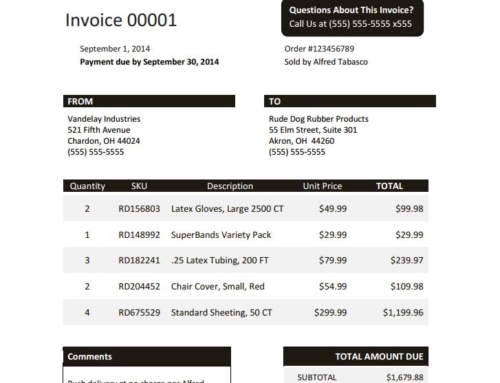Calculating and monitoring your lines of credit to customers can make a huge difference in your accounts receivable. For every invoice that you send out to customers, there is a cost associated. Are your customers paying you on time or are they significantly behind? If a majority are behind, extending credit could actually be hurting your business.
Below we will cover the basics on how to calculate the cost of credit and share accounts receivable best practices to help you decrease and control the cost of credit moving forward.
HOW TO CALCULATE THE COST OF CREDIT
Cost of Credit = (Cost of Cash (APR%)) x (Amounts Late) x (Days Late)
This is an important factor to consider to ensure you are making money, not losing money on accounts receivable. But, if you are not monitoring this and making changes to reduce the cost of credit, you could very well be losing money on credit sales to certain customers without any idea. If monitoring and managing the cost of credit is among your top priorities (and it should be), but you or your collectors rarely have the time to analyze it, you may want to invest in a software solution that can allow you instant access to the cost of credit on an individual customer basis and across customers.
For example, the cost of credit function in Lockstep Collect accounts receivable software evaluates how much your customers cost the business beyond agreed-upon credit terms so you can make decisions about their creditworthiness. The system allows you to identify the top customers who are costing you the most, above and beyond their agreed upon credit terms.
The system also allows you to set up alerts based on triggers you define, something you’d never be able to do manually. The system will alert collectors, controllers or the CFO the minute customers reach certain defined points such as:
- Cost of credit is more than X
- More than X broken promises in the past 6 months
- More than X disputes in the past 6 months
- X days since the last credit review
- Average days late is more than X
- This customer is on credit hold
ACCOUNTS RECEIVABLE BEST PRACTICES TO CONTROL THE COST OF CREDIT
While having the right tools is an important success factor in reducing the cost of credit, making sure those employees repsonsible for collecting invoices are following proven accounts receivable best practices is just as important. Here are a few to get you started:
MINIMUM INVOICE AMOUNT
Consider establishing a policy that purchases under a certain amount must be paid for by cash, check or credit card and only invoice purchases above that amount. You may want to grant large customers a waiver if their overall purchase volume warrants an exception to your standard policy, etc.
CHARGE LATE FEES
Although charging a late fee to customers as an incentive to pay on time can be helpful, it is not always the best option. You may actually end up costing you more to send bills out and process late fees than it would to just accept a late payment. While you may cut down on the number of late payments, you could potentially scare customers off, especially if charging late fees is not standard practice in your industry. With that being said, some businesses find that charging late fees can be pretty beneficial.
SET YOURSELF UP FOR SUCCESS
If you can eliminate invoice disputes and late payments from the beginning, you can reduce the cost of credit. Of course this is easier said than done, but it’s possible. The first order of business is to figure out why your customers are paying you late in the first place. Are you careful about who you extend credit to? Many companies do not do the few simple things, like ask for and follow up on trade references, to reduce the risk of late payments.
ACCEPT CREDIT CARDS OR ACH
Credit card payments improve cash flow and reduce risk because customers have the ability to pay immediately, instead of waiting for a check to arrive in the mail. If you can offer your customers an online bill payment portal, they simply will be able to click a link and enter a secure payment center. From there, they can pay all outstanding invoices immediately. In fact, some Lockstep Collect users have found that many of their collection messages are followed up immediately by a portal payment via credit card or ACH.
AUTOMATE THE PROCESS
Accounts receivable management automation helps businesses improve management over their credit collections and business processes from beginning to end. With a better process for collecting on credit sales you reduce the likelihood of taking on bad-debt because of it. Additional benefits of automated accounts receivable management include: reduced transaction costs, improved cash flow and cash forecasting, optimized staff productivity, and reductions in bad debt and write-offs.




